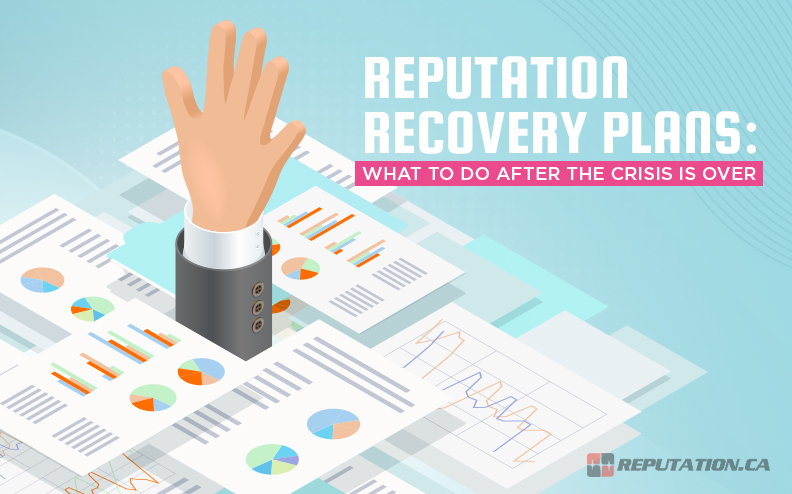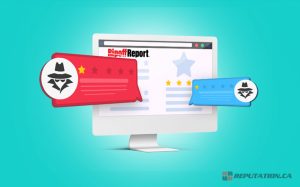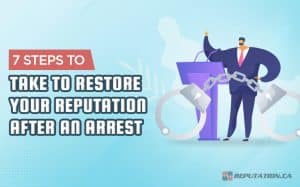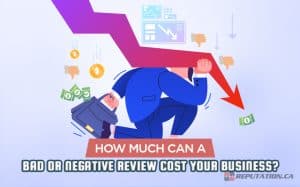Every company needs a disaster recovery plan. If your office catches on fire, what are the next steps? If an earthquake demolishes the infrastructure of your city, how can you progress? If a computer virus infects your network and encrypts your business-critical data, demanding a ransom, what do you do?
More than just a physical and digital set of disasters, a robust disaster recovery plan includes other forms of disaster as well. In particular, we’re concerned about a reputation disaster. A company gets caught using sweatshops in Vietnam; when the scandal blows over, how do they recover? A company has a member of the executive team arrested for embezzling, or for sexual harassment, or for something less savory; what does the business do?
There are many reasons why a company might suffer under a reputation crisis. Handling the immediate crisis is critical, but once the immediate news cycle has passed, how do you manage your reputation to put the past behind you?
Step 1: Analyze the Situation
While we’re talking about after the initial crisis dies down, this first piece of advice is the same regardless. You need to analyze your overall situation. Answer questions such as:
- Are there any individuals who are outspoken about proliferating a negative reputation, accurate or otherwise?
- Are there particular channels or outlets that are circulating the story long after others have stopped?
- What kind of content comes up when your company name is searched? Are they trustworthy? Can they be addressed, or do they need to be suppressed? Can they be suppressed?

These sorts of questions can give you an idea of how you need to proceed. Trying to bury old news with new press releases, new content, and new brand building doesn’t work as well when there are vociferous members of the community continually reminding others of your past transgressions.
Remember, you are essentially embarking on a campaign of propaganda. The key is to make sure that the propaganda is real; that you have, in fact, addressed whatever core issue that is at the heart of user complaints, and that you’re doing better now, so won’t they please stop?
Step 2: Determine a Reasonable Course of Action
There are generally three ways to deal with the fallout of a crisis.
First, you can sweep it under the rug. By ignoring and refusing to acknowledge the issue, you may be able to suppress it, simply because many of the people who circulate it are doing so just to get a rise out of you and your company. This can work in some cases but often does not help in the long term.
Second, you can attempt rehabilitation. A company that is caught exploiting underpaid gig workers might be able to resolve the issue by hiring those workers full time, with better pay and benefits. By demonstrating that they can change, resolve the issue once it is brought to their attention, and make a tangible difference, the issue can be dealt with and a counter-campaign of reputation building can be leveraged for a more positive result.

Third, you may need to sever. If an executive is accused of assault, is caught on video being racist, or attends unsavory events, there’s no way to rehabilitate that person’s image; for the good of the company, that employee must be removed and disavowed, and investigation should be conducted into if there are others on the team that shares their views.
Regardless of your own personal feelings on the matter, what matters is the overall good of the company. A company that clings to and supports an executive or employee who proves unsavory will go down with the ship.
Step 3: Assess the Damage
Perform a sweep of the media where it matters. Consider different perspectives.
- What do your potential and actual customers think of this? If a typical customer, unaware of any of this, searches your company name, will they find something that turns them away from converting?
- What do potential investors and business partners think? Some reputation crises do not affect market value, while others might. Investors will react differently to an ongoing problem than they would a one-off issue.
- What does the media think of this? The media is powerful and can skew a reputation better or worse. Does the media have reason to pursue the issue, or will it be dropped?
- Are there individuals of note who proliferate the issue? Having a noteworthy and vocal enemy can be much more difficult to deal with than simply having to deal with a trend of re-circulated news stories.

Categorize the issues you face, determine if any are active or if they’re all older and being recirculated, and categorize the impact they may have. It can also be worthwhile to verify the platforms involved; dealing with issues on Twitter is different from dealing with them in Forbes.
Step 4: Appropriately Address the Core Issue
The key to any good reputation management is addressing the actual issue. Companies like Nestle have pervasive issues with reputations despite massive amounts of money thrown at reputation management specifically because they continue to persist in their actions, whether it’s draining water they don’t have rights to drain or essentially leveraging slave labor to produce chocolate. Until they actually address these issues, these stories will persist and the company will continue to face legal battles, reputation attacks, and other issues.

Now, the vast majority of companies won’t have to deal with issues on this scale. More likely, you’ll have to deal with the fallout of a poor-quality product, a poor product launch, or an employee causing issues in their free time. These are comparatively easy to handle.
In some cases, you may be able to send an employee into training and demonstrate that they have changed. In other cases, you may need to cut an employee loose and no longer support them. No, “paid leave” doesn’t count.
Before you can repair your reputation, you need to address the cause of the problem in the first place.
Step 5: Remove Information that Can Be Removed
Now it comes time to actually deal with the ongoing reputation issues you’ll face. The first thing you should do is look for cases where stories are spreading about the issue, but they can be removed. For example:
- Comments on blog posts on your site.
- Replies to comments on your social media feed.
- Content published on a channel you control.
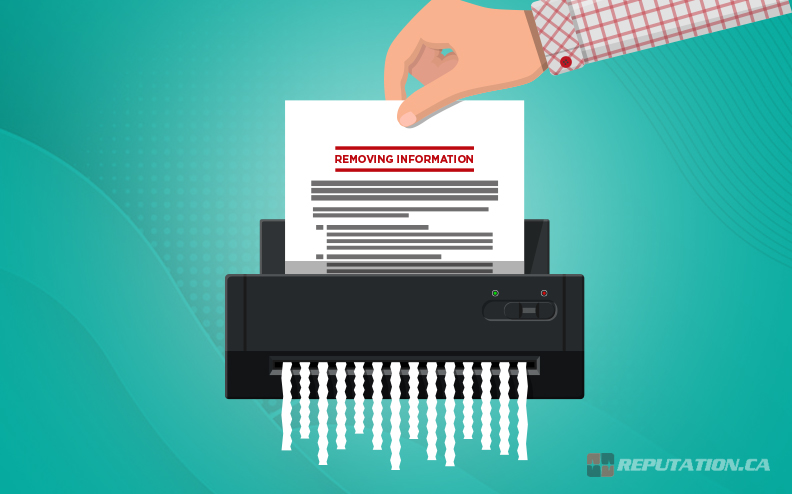
All of these can be removed. Be aware that people will notice their removal, and this may play into a resurgence of the issue, so be prepared to handle that until it dies down again.
Remember that some kinds of content may be removable through legal means. If you go through a court system, you can declare certain misinformation as slander or libel and may be able to get court orders to have it taken down from certain kinds of sites. Remember, though, that legal proceedings create records of their own, and those can be harder to remove.
Step 6: Suppress Information that Can Be Suppressed
Some information cannot be removed, but it may be suppressed. You can use some SEO techniques to, for example, target the specific keyword that causes you grief and publish content about that keyword that tells the true story.

A relatively benign example of this is Chipotle. Chipotle occasionally has to deal with a surge of people finding a leaf in their food. This leaf is benign; it’s a bay leaf, part of their overall set of spices. Chipotle created a page dedicated to the leaf, which is now the #1 Google result for “chipotle leaf”. In this manner, anyone who searches for the leaf will find an explanation that absolves the company of any potential issues, handling it in a humorous and beneficial way.
This can be more difficult to do when the reputation issue is something, for example, tied to the #MeToo movement or to racism complaints, or something on the order of Nestle’s issues. Even so, using SEO to target specific keywords that are causing you issues can allow you to suppress the negative content enough that it’s no longer an imminent threat.
Step 7: Begin a Campaign of Brand Rebuilding
The truth about rebuilding from a reputation crisis is that it’s a long-term project. You won’t be able to repair your reputation and get back to business as usual in a matter of days or weeks. Depending on the scale of the issue – and how vocal the opposition continues to be – it might take months or years for you to reach a point where you can no longer worry about it.

Perhaps the best action you can take at this point is hiring a reputation management company to handle the ongoing process of recovery and brand building. Content marketing, social media campaigns, SEO campaigns; all come together as a form of marketing, propaganda, and news cycling to get you out from under the oppressive weight of a crisis.
Ideally, you will be able to take demonstrative and tangible actions that show that whatever the issue was, it is past you. Donating money to an organization that funds whatever is in opposition to the issue, for example, can help. Setting up ongoing training can help. A lot depends on what the specific issue was that you’re trying to handle.
Emotions run hot during a crisis, and one of the number one tips for handling a crisis is to take a step back, take a deep breath, and approach the issue calmly and logically.
The trouble is, these emotions don’t go away. In fact, once you’ve been dealing with the fallout of a crisis for months, the frustration of making slow headway while continually seeing comments spring up can be intensely stressful. It can be very tempting to lash out, particularly when social media is right there as a platform you can use to do it.

Unfortunately, the vast majority of the time, talking about the issue on social media – no matter how well-reasoned and how passionate your defense – is going to be a net negative. You’ve addressed the issue before, in other ways; now it’s time to let it lie.
Step 9: Understand the Time Scale for Repairs
As mentioned above, a reputation crisis might not be something you can handle very quickly. The crisis itself can take months to deal with. It can then take several more months to deal with the immediate fallout, implement policies and enact change. It can take even more months for the news cycle to pass beyond the issue, for people to slowly lose interest, and for things to return to some semblance of normal.

During this time, you’ll have to deal with a lot that you might not expect. Some employees might leave because they don’t want to be associated with the issue, even if it doesn’t affect them. Some partnerships might be lost or deals might fall through. A lot of damage can rack up, and dealing with that damage can take center stage over other channels, like social media and SEO.
Coping with a reputation crisis takes a long time. This is why it’s often a good idea to hire a reputation management firm to handle it for you. Hiring such a firm gives you several advantages.
- They will know what they’re doing, with established processes and connections to make it smoother.
- They are not directly involved in the situation themselves, and will not do more damage through social channels and poorly considered actions.
- They can cover channels and routes to recovery that you might not have known about, or not have access to.
- They can handle all of this while you spend your time and energy on recovering from the damage they cannot handle, such as lost employees, damage to morale, or issues with products/shipping/fulfillment.
Sooner or later, your company will recover. The time scale involved is long, but it can be shortened by using the right channels and tools. That’s why hiring an expert is always a good idea.




